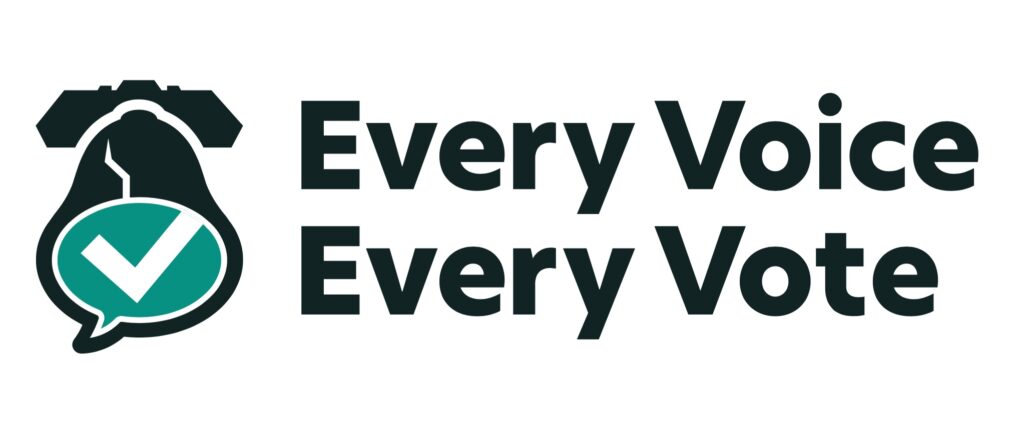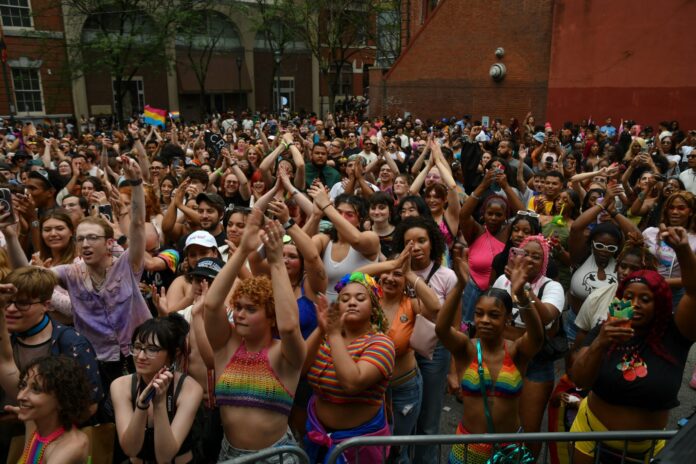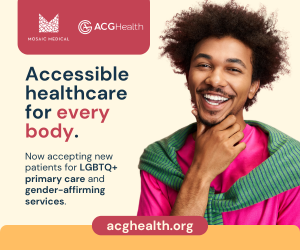Pride events are growing in cities across the United States — including Philadelphia, which hosted its biggest celebrations in 2024. The city saw record numbers at Pride in June, jumping to 110,000 attendees in 2024 — up from the previous year’s 65,000. This includes 12,000 youth and families.
“I didn’t anticipate that we would close to double our attendance,” said Tyrell Brown, who leads efforts for Philly Pride 365 — the organization that hosts the city’s Pride marches and festivals.
But they expect that the city’s Pride events will only continue to expand in the future. That growth has a major economic impact — not just on the Gayborhood but on the city as a whole.
“Pride is about multidimensional advocacy — where people engage their wellbeing in multiple different ways, even if it’s just about joy,” Brown said. “But I also know that if we’re looking for tangible outcomes to answer, ‘Why does it matter?’ it can’t just be about rainbow flags and smiles.”
Data can help tell that part of the story.
LGBTQ+ consumers spend approximately $917 billion on goods and services annually across the United States. Philly Pride 365 heavily vets sponsors and vendors to ensure their values align with the mission of the organization — protecting LGBTQ+ dollars from accidentally investing in rainbow-washed pandering.
They welcomed 323 registered vendors to June’s “Be YOU” Pride festival in 2024. According to data collected by Philly Pride 365, attendees spent an estimated $4,411,000 on festival grounds.
On average, attendees spent $40.10 at the event, mostly on food and beverages but also on merchandise. A report produced by the organization about the economic impact of the event notes that small business, hospitality and recreation sectors likely benefited most.
LGBTQ+ founders accounted for 5% of entrepreneurs in 2023 and started 1 in 10 new businesses, but their start-ups were largely funded by their own savings. A study by Gusto, an HR platform that also conducts market research, found that those founders were more likely to want to make a positive impact on their communities — but LGBTQ+ entrepreneurs are also more likely to experience discrimination as they try. Some of those who have borrowed money for start-ups aren’t out to their investors because of it.
Brown said that Philly Pride 365 has been intentional about using large-scale events to create opportunities that truly make a difference for these small business owners — and the tangible economic impact of Pride festivals for many LGBTQ+ people isn’t easily reflected in numbers on a page.
For instance, it can be a place for those who need a supportive marketplace — such as marginalized vendors or emerging artists — to find their customer base. These events often help them earn enough money to make ends meet, expand their businesses, or save enough money for personal goals that wouldn’t be attainable without the income they earn during Pride events.
The report also highlights that Philly Pride 365 events support the jobs of those who provide resources for LGBTQ+ community members, as mobilization efforts and connections to care are key aspects of the festivals.
In 2024, at least 30,000 attendees connected with resource providers at the festival’s POP Wellness area — which offered on-site testing and health screenings, support with job searches, linkages to therapy, housing and food support, and addressed other community needs. This, Brown underlined, is crucial for people who might not otherwise see a health-care provider to know how to find access to the resources they need without an intentionally cultivated space.
Although attendees did not pay for these services, the economic impact for those providers unfolds in other ways. For example, LGBTQ+ affirming health and wellness providers might be paid by their organizations to come to the events or they might also receive revenue from incoming donations, new clients and patients, and professional partnerships as a result of attending.
The data collected by Philly Pride 365 only offers a small snapshot of Pride weekend. Attendance calculations only include numbers for the Pride march and festival on Sunday, June 2. The number of attendees who participated in other Pride events throughout the three-day weekend — including opening-night parties, a gala at the Philadelphia Museum of Art, and “Pride Around the City” events — were not captured.
Those events also featured paid vendors, performers and exhibitors. This means the economic impact is likely greater than the numbers reflected in the data collected, which only accounts for spending on festival grounds between 12 p.m. and 7 p.m. at Sunday’s events.
It’s not just local businesses and vendors on festival grounds that benefit. For example, Lyft noted that rideshare use bumps up an average 12% during Pride events. That’s more use of rideshare services than was seen on stops along the Taylor Swift Eras tour, which saw an average bump of 7.6%. A record-breaking surge in public transportation use was seen in Washington D.C.’s Pride weekend. Although data wasn’t captured about Philadelphia’s use of rideshare or public transportation, the city likely falls in line with those trends.
The march and festival is estimated to have generated $4,656,043 of economic activity in Philadelphia County — and that number doesn’t account for the ripple effect of continued spending for other needs — such as lodging, meals that took place off festival grounds, shopping at local retailers, and more. It also doesn’t account for personal spending for smaller and private events — such as the money that’s spent on supplies or food, rental spaces, and other needs — or at hyperlocal Pride events that take place in specific neighborhoods.
OURFest — another Center City and Gayborhood march and festival that celebrates National Coming Out Day in October — saw an estimated 44,000 attendees.
These events are organized by community volunteers — including Brown, who isn’t paid for their work. Sponsors are never front and center and small business inclusion is often subsidized to avoid pricing people out. That makes this an expensive feat for organizers. Philly Pride 365 spent almost $200,000 to produce June’s Pride events — paying vendors, talent, security and other important behind-the-scenes expenses. But the organization went into the negative by $51,000.
“It wasn’t financial mismanagement,” said Brown, noting that the cost of insurance is what ultimately pushed the organization into the red with a line of credit to cover that cost.
Inflation in 2023 and 2024 also caused constraints for the organization, just as it impacted average Americans. For 2025, a fundraising committee is being tasked with raising funds to support the cause. One of the goals is to substantially increase the budget so that the organization has more wiggle room in the future.
This includes Pride 2026 — which will take place during the nation’s 250th anniversary amidst a summer of celebratory events throughout the city. Philly Pride 365 plans to increase the budget for that year’s festival to match another massive turnout.
“I don’t think anyone in the history of Philadelphia anticipated there would be 110,000 people at our Pride,” said Brown. “I’ve never seen that in my entire life. And as a result of that, I think we now know that we should plan for Philadelphia to really host one of the hallmark Pride events in the northeastern corridor — maybe even in the nation.”


